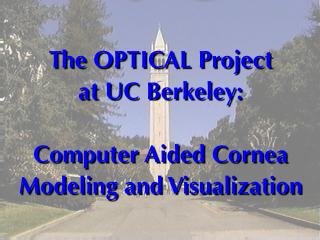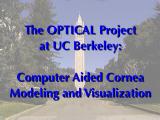 |
(Title Screen)
|
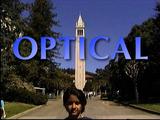 |
At the University of California at Berkeley, the OPTICAL project is a
multidisciplinary effort in the Computer Science Division and School
of Optometry.
|
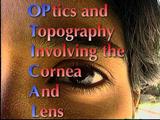 |
"OPTICAL" is an acronym for "OPtics and Topography
Involving the Cornea And Lens". This project is concerned with the
computer-aided measurement, modeling, reconstruction, and
visualization of the shape of the human cornea, called corneal
topography.
|
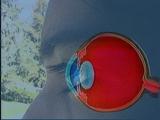 |
The cornea is the transparent tissue covering the front of the eye.
|
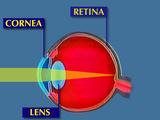 |
It performs 3/4 of the refraction, or bending, of light in the eye,
and focuses light towards the lens and the retina. Thus, subtle
variations in the shape of the cornea can significantly diminish
visual performance.
|
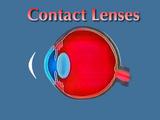 |
Eye care practitioners need to know the shape of a patient's cornea to
fit contact lenses,
|
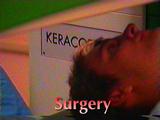 |
to plan and evaluate the results of surgeries that
improve vision by altering the shape of the cornea,
|
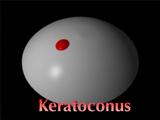 |
and to diagnose
keratoconus, an eye condition where the cornea has an irregular shape
with a local protrusion, or "cone", which has dramatic effects on
vision.
|
 |
(Summarized reasons why eye clinicians need to know the shape of patients' corneas)
|
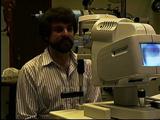 |
Recently, instruments to measure corneal topography have become
commercially available. These devices, called videokeratographs,
|
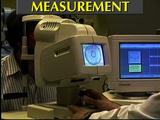 |
typically shine rings of light onto the cornea and then capture the
reflection pattern with a built-in video camera.
|
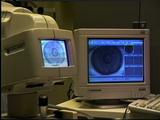 |
Instead of allowing
the videokeratograph to process the pattern,
|
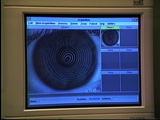 |
we at the OPTICAL project
extract the data and
|
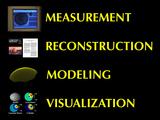 |
construct a mathematical spline surface representation from these
reflection patterns,
|
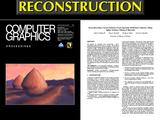 |
as is described in our SIGGRAPH '96 paper. In
addition to developing this novel modeling algorithm, we are exploring
new scientific visualization techniques to display the resulting
information in an intuitive and accurate manner.
This video compares
our new visualization methods with an existing technique.
Using our modeling and visualization software, we will first show real
keratoconic data and then a simulated keratoconic model.
|
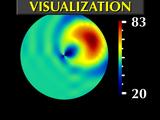 |
The most popular display of corneal topography is called the "corneal
map". This is similar to a topographic map where equal values of some
parameter are displayed in the same color.
|
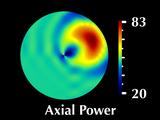 |
The usual parameter that is
displayed is called axial power. However, as we will show, this can
produce misleading results.
|
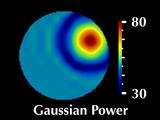 |
We are proposing a pair of alternative
parameters that overcome this problem: Gaussian power, which is
related to the geometric mean of the minimum and maximum curvatures at
each data point,
|
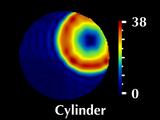 |
and cylinder, related to the difference between the
maximum and minimum curvatures at each data point.
|
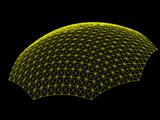 |
We compute the
values of these parameters using our reconstructed spline surface
model.
|
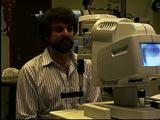 |
Let's look at the corneal data from the patient we saw being
measured earlier.
|
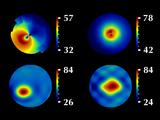 |
His cornea has a cone in the lower right (our left).
|
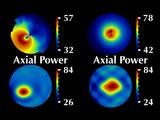 |
The top two
corneal maps show axial power,
|
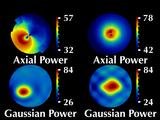 |
and the bottom maps show Gaussian power.
|
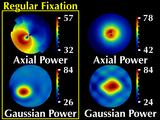 |
The left pair shows regular fixation where the patient is looking
directly into the videokeratograph.
|
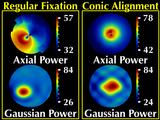 |
In the right pair, the patient
has shifted his gaze up toward his left so that the cone aligns with
the center of the videokeratograph; we call this conic alignment.
|
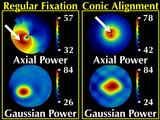 |
As we compare the two representations, we note an important
difference: For different gaze directions, the shape and values of the
cone region as depicted in the axial power maps differ
|
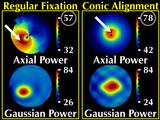 |
(for example,
the values at the cone center are 57 and 78 Diopters)
|
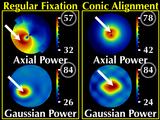 |
but remain
invariant with our Gaussian power map. In other words, by simply
changing the direction of the patient's gaze, axial power yields two
conflicting descriptions of the cone whereas our proposed
visualization does not have this problem.
|
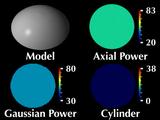 |
Now let's look at a simulated cornea. These four windows all display
the same keratoconic model. The upper left animation indicates how we
scale and move the cone around, while the other images show corneal
maps displaying different parameters. Axial power is shown in the
upper right, Gaussian power in the lower left, and cylinder in the
lower right.
|
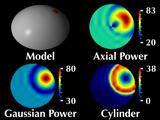 |
The model of our simulated cone is rotationally symmetric, and
maintains a constant shape when moving across and around the
cornea.
|
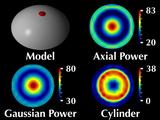 |
Our two new visualizations faithfully represent the symmetry
and shape invariance.
|
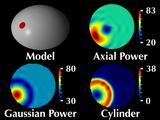 |
However, axial power fails on both accounts,
erroneously showing the cone region as significantly changing shape as
it moves around and across the cornea, which is what we saw earlier.
|
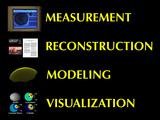 |
This video has shown how the OPTICAL project is developing new
computer aided cornea modeling and visualization techniques to enable
eye care clinicians to help people overcome some of their difficult
vision problems.
|
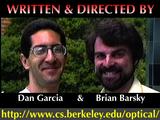 |
Roll credits.
|
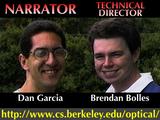 |
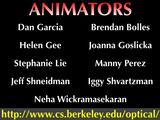 |
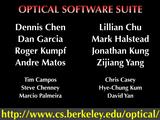 |
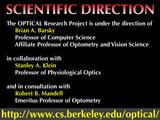 |
 |
 |
 |
An inside joke. We found it funny.
|
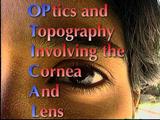 Our SIGGRAPH '96 Electronic Theatre Video
Our SIGGRAPH '96 Electronic Theatre Video